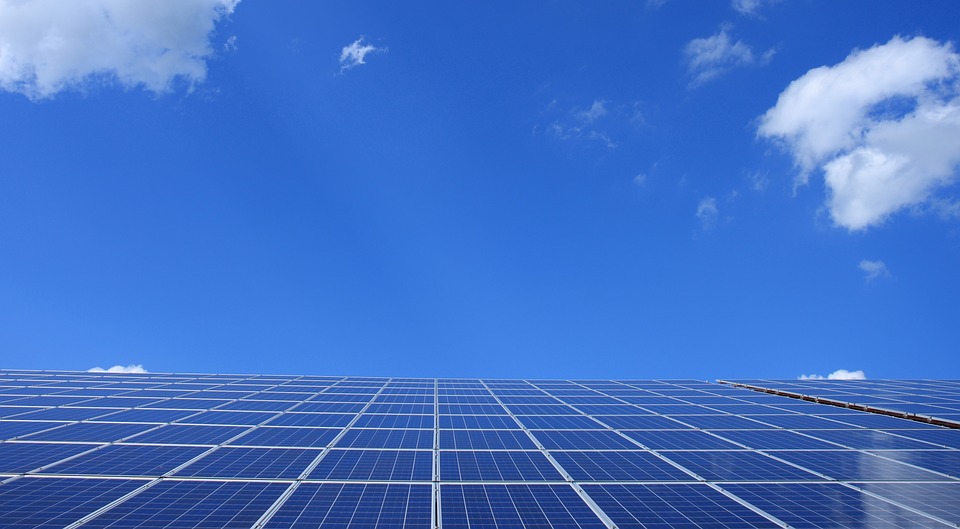State Trails Badly In Renewable Energy
How far behind is Wisconsin? Let’s check the data.
The Wisconsin Public Service Commission’s recent approval of plans for the Koshkonong Solar Energy Center near Deerfield in Dane County suggests a desire to move the state forward in the use of alternative sources of energy—ones that do not result in greater greenhouse gases. The project has been described as the state’s largest solar farm to date.
The need to switch energy sources from fossil fuels to renewables is supported by the increasing concentration of carbon dioxide in the atmosphere, as shown on the next graph, which is based on data from the National Aeronautics and Space Administration (NASA). Since 1958, the concentration of CO2 in the atmosphere as risen by 33%.
In turn, the increased concentration of CO2 and other greenhouse gases has led to higher average temperatures globally. The following graph, also using data from NASA, illustrates the change in global surface temperature relative to a baseline of temperatures during 1951 to 1980. The change in average temperature is fast approaching two degrees Fahrenheit.
While two degrees may not seem like much, it has already led to rising sea levels, increasing drought in the West with subsequent forest fires, and melting of glaciers.
Up until now, Wisconsin has been a laggard in making the switch to renewables. The next graph shows Wisconsin’s mix of energy sources to produce of electricity as reported by the federal government’s Energy Information Administration (EIS).
Coal is still Wisconsin’s largest source of energy to produce electricity, followed closely by natural gas. Both are sources of greenhouse gas, although coal is substantially worse. Wind energy supplies about 3% of electricity. Solar energy barely registers, supplying around 1% of the total energy.
The next graph shows the current energy mix for California. The largest source of energy comes from natural gas. Coal has largely disappeared, accounting for 0.14% of the total.
Meanwhile, wind has grown to 8% of the total and solar to 14%.
However, when it comes to wind energy, Iowa takes the championship, as can be seen in the next graph. Wind is much the largest source for energy used to produce electricity in that state.
According to Warren Buffett, whose Berkshire-Hathaway owns Iowa’s largest electrical utility, wind energy has allowed Iowa to offer the lowest rates in the region, helping attract firms that are heavy users of electricity.
In fact, both wind and solar energy have seen substantial reductions in cost over the past decade. The data in the next two graphs use data from the financial advisory and asset management firm Lazard, but numerous other studies point to similar trends.
The next graph shows Lazard’s estimate of the cost of electricity using wind. The levelized cost of energy is calculated by dividing the present value of capital and operating costs by the total energy produced over the life of the facility. The solid line shows the average estimated cost while the two dotted lines show the estimated range of costs. Over this period of slightly over a decade, the cost of wind power has dropped by about 72%.
The next graph shows similar estimates for solar energy. Here, the drop is even more dramatic, at around 90%.
Both Wisconsin and California—and many other states—still get a substantial share of their power from nuclear reactors. Nuclear power in Wisconsin produces approximately 14% of the state’s electricity on an annual basis.
In recent years the number of reactors has seen a decline. At one time Wisconsin had three nuclear power plants, Point Beach, Kewaunee, and the La Crosse Boiling Water Reactor (BWR), as well as nearby Zion Illinois. Recently, there was news of a feasibility study of a new reactor at the La Crosse site. Both the Kewaunee and the nearby nuclear plants have been taken over by a company called Energy Solutions which seems to specialize in decommissioning nuclear reactors.
Accidents at Three Mile Island in Pennsylvania, Chernobyl in Ukraine, and Fukushima in Japan contributed to nuclear power’s loss of popularity. Spent fuel must be safely stored for generations to come even if the reactor is decommissioned according to plan.
In the case of an accident, there is an implicit assumption that the site will be under the control of a responsible government. That may not always be the case. According to an amazing article in the New York Times, during their invasion of Ukraine, Russian troops set up camp in the Chernobyl Exclusion Zone and “tank treads ripped up the toxic soil, bulldozers carved trenches and bunkers, and soldiers spent a month camped in — and dug into — a radioactive forest.” They also shut off electrical power to a cooling pool that stores spent nuclear fuel rods the generators used to cool spent fuel, raising the possibility that hydrogen could accumulate and explode.
Recently there has been renewed interest in nuclear power, which does not create greenhouse gases as a byproduct of nuclear reaction process. However, there has been growing skepticism about whether nuclear power is cost-competitive, particularly with the recent decline in the cost of renewable energy.
While the main reason for switching to renewable energy is to reverse the trend towards global warming, Russia’s invasion of Ukraine supplies another. Too much of the world’s fossil fuels is found in countries run by dictators.
While coming late, the plan for the Dane County solar energy project is a positive sign. Let’s hope that it will be followed by many more.
Data Wonk
-
Life Expectancy in Wisconsin vs. Other States
 Dec 10th, 2025 by Bruce Thompson
Dec 10th, 2025 by Bruce Thompson
-
How Republicans Opened the Door To Redistricting
 Nov 26th, 2025 by Bruce Thompson
Nov 26th, 2025 by Bruce Thompson
-
The Connection Between Life Expectancy, Poverty and Partisanship
 Nov 21st, 2025 by Bruce Thompson
Nov 21st, 2025 by Bruce Thompson





























